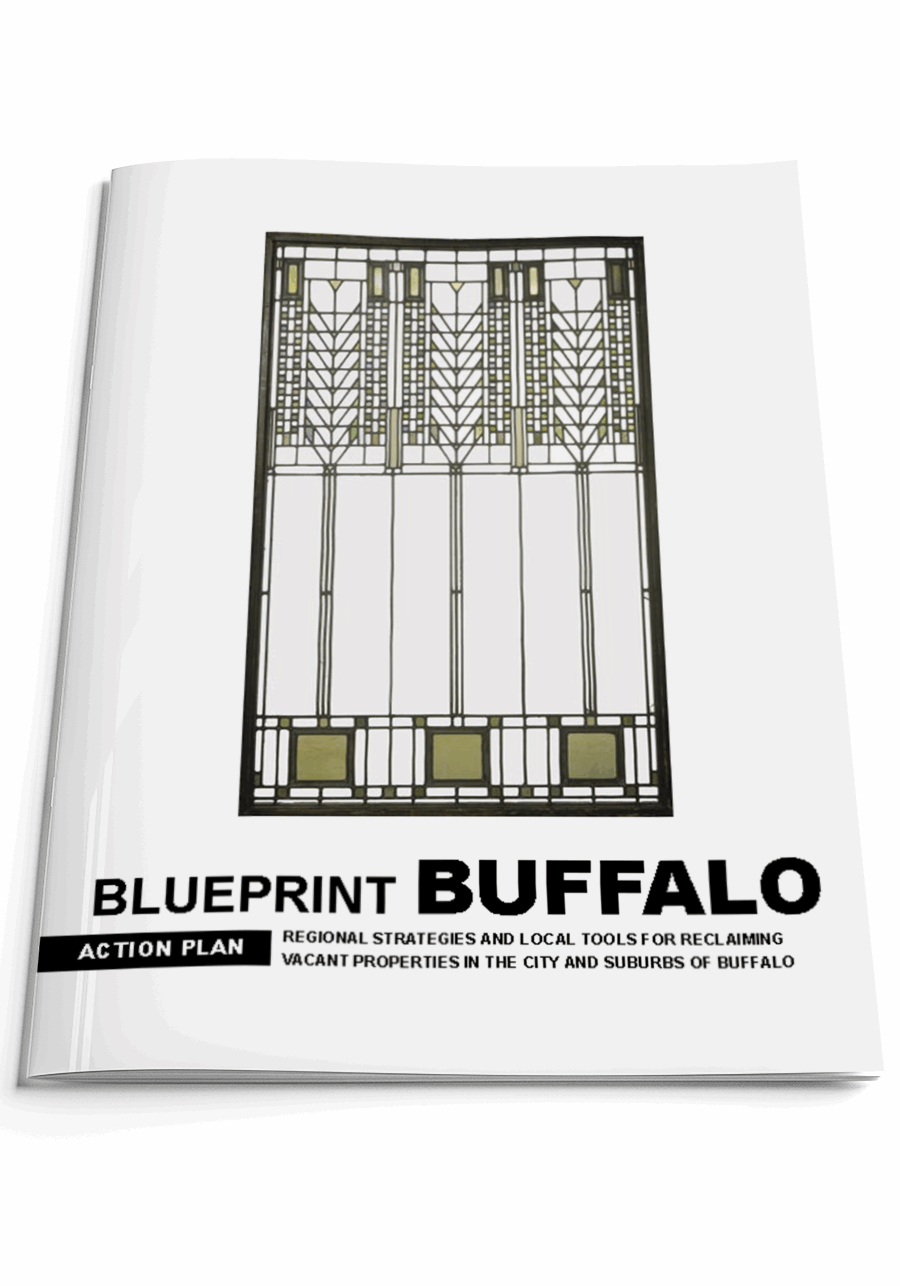Blueprint Buffalo Action Plan
Regional Strategies and Local Tools for Reclaiming Vacant Properties in the City and Suburbs of Buffalo
Published: October 2006
Geography: New York
Author(s): National Vacant Properties Campaign
The Blueprint Buffalo Policy Brief offers an overview of recommendations and models to emphasize that a comprehensive vacant properties initiative will require coordinated action by the city, surrounding communities, state and federal agencies, and neighborhood groups. Both components of the Blueprint make the case for why vacant property revitalization should become the major focal point for the rebirth of the city of Buffalo and the entire Niagara region.
In early 2005, the National Vacant Properties Campaign launched its Technical Assistance Demonstration Program, with financial support from the Surdna Foundation. The program brings together teams of practitioners to evaluate existing policies and programs that address abandonment and blight in seven pilot communities.
The Buffalo-Niagara region was one of 7 communities selected from among 50 who responded to NVPC’s nationwide request for proposals. The Buffalo-Niagara proposal was sponsored by the Office of the Local Initiatives Support Corporation (LISC), the Amherst Industrial Development Agency, and the Institute for Local Governance and Regional Growth at University at Buffalo. This team requested a regional vacant property assessment that would include the surrounding suburban communities of Amherst, Tonawanda, and Cheektowaga. The informal advisory committee includes Partners for a Livable Western New York, Buffalo’s Director of Strategic Planning, and other key stakeholders in the Buffalo region.
Over a period of about nine months, the NVPC team conducted interviews and gathered insights that have resulted in this report. During the study period, Buffalo–Niagara emerged as a region broadly challenged by decades of disinvestment and population loss, but also as a close network of communities singularly blessed with a wealth of historic, transit-friendly, and affordable neighborhoods and commercial areas. Building on the City of Buffalo’s Facilities and Vacant Land Management Plan now formally adopted by the Buffalo Common Council as part of its comprehensive 20-year plan for the city, the NVPC team sought to reexamine how the revitalization of Buffalo’s vacant properties could actually serve as a catalyst to address the region’s other most pressing problems: population loss, a weak real estate market in the inner city, signs of incipient economic instability in older suburbs, quality-of-life issues, school quality, and suburban sprawl. The authors of this report found that Buffalo’s vacant and underused properties offer a crucial convening point for turning the region around economically and protecting its intrinsic value as a livable, friendly “City with a Heart.”
Subscribe to join 14,000 community development leaders getting the latest resources from top experts on vacant property revitalization.

